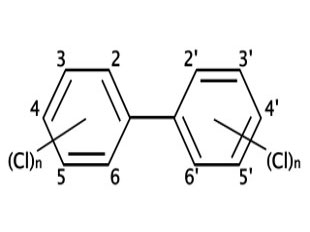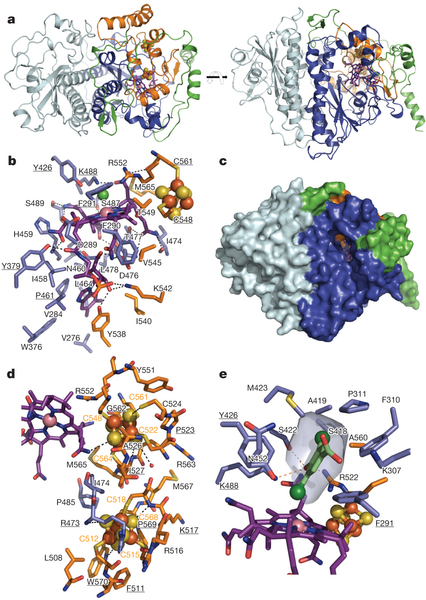微生物清除污染物毒性细节揭开
来源:《Nature》
作者:Karl A. P. Payne
时间:2014-11-17


英国曼彻斯特大学的科学家历时15年深入研究,掌握了微生物是如何降低污染物毒性的详细过程。该研究有望帮助科学家们开发出降低二噁英、多氯联苯(PCB)等污染物毒性的新方法。相关研究结果近日刊登在《自然》杂志上。
大卫·利斯教授解释道:“大部分有毒污染物都含有卤族元素,而大多数生物系统并不知道如何应对这些分子。但是,有些微生物利用维生素B12就能清除这些卤素原子。我们的研究发现,这些微生物使用维生素B12的方式与我们所知的大不相同。”
利斯教授及其团队通过对生长更快的微生物进行基因改造,从而获取了关键的蛋白质。他们继而利用X射线晶体成像技术,获得了卤素原子被清除的细节。他表示,了解这些独特的解毒过程细节后,科学家现在可以试着复制这一过程,从而开发出新手段,更快速高效地解决世界范围内有毒污染物问题。
目前,大量的有害分子被排放到自然界中,其中许多是通过污染物直接排放,还有些是通过室内垃圾燃烧而来。这些有害分子的浓度日渐升高,对环境和人类的威胁也越来越大。这也是该研究背后的主要动因。人们已经采取了一些手段来限制污染物的产生,例如,多氯联苯在上世纪70年代在美国被禁用,并于2001年在世界范围内遭禁。(来源:生物360)
Reductive dehalogenase structure suggests a mechanism for B12-dependent dehalogenation
Abstract Organohalide chemistry underpins many industrial and agricultural processes, and a large proportion of environmental pollutants are organohalides. Nevertheless, organohalide chemistry is not exclusively of anthropogenic origin, with natural abiotic and biological processes contributing to the global halide cycle. Reductive dehalogenases are responsible for biological dehalogenation in organohalide respiring bacteria, with substrates including polychlorinated biphenyls or dioxins. Reductive dehalogenases form a distinct subfamily of cobalamin (B12)-dependent enzymes that are usually membrane associated and oxygen sensitive, hindering detailed studies. Here we report the characterization of a soluble, oxygen-tolerant reductive dehalogenase and, by combining structure determination with EPR (electron paramagnetic resonance) spectroscopy and simulation, show that a direct interaction between the cobalamin cobalt and the substrate halogen underpins catalysis. In contrast to the carbon–cobalt bond chemistry catalysed by the other cobalamin-dependent subfamilies, we propose that reductive dehalogenases achieve reduction of the organohalide substrate via halogen–cobalt bond formation. This presents a new model in both organohalide and cobalamin (bio)chemistry that will guide future exploitation of these enzymes in bioremediation or biocatalysis.
原文链接:http://www.nature.com/nature/journal/vaop/ncurrent/pdf/nature13901.pdf




